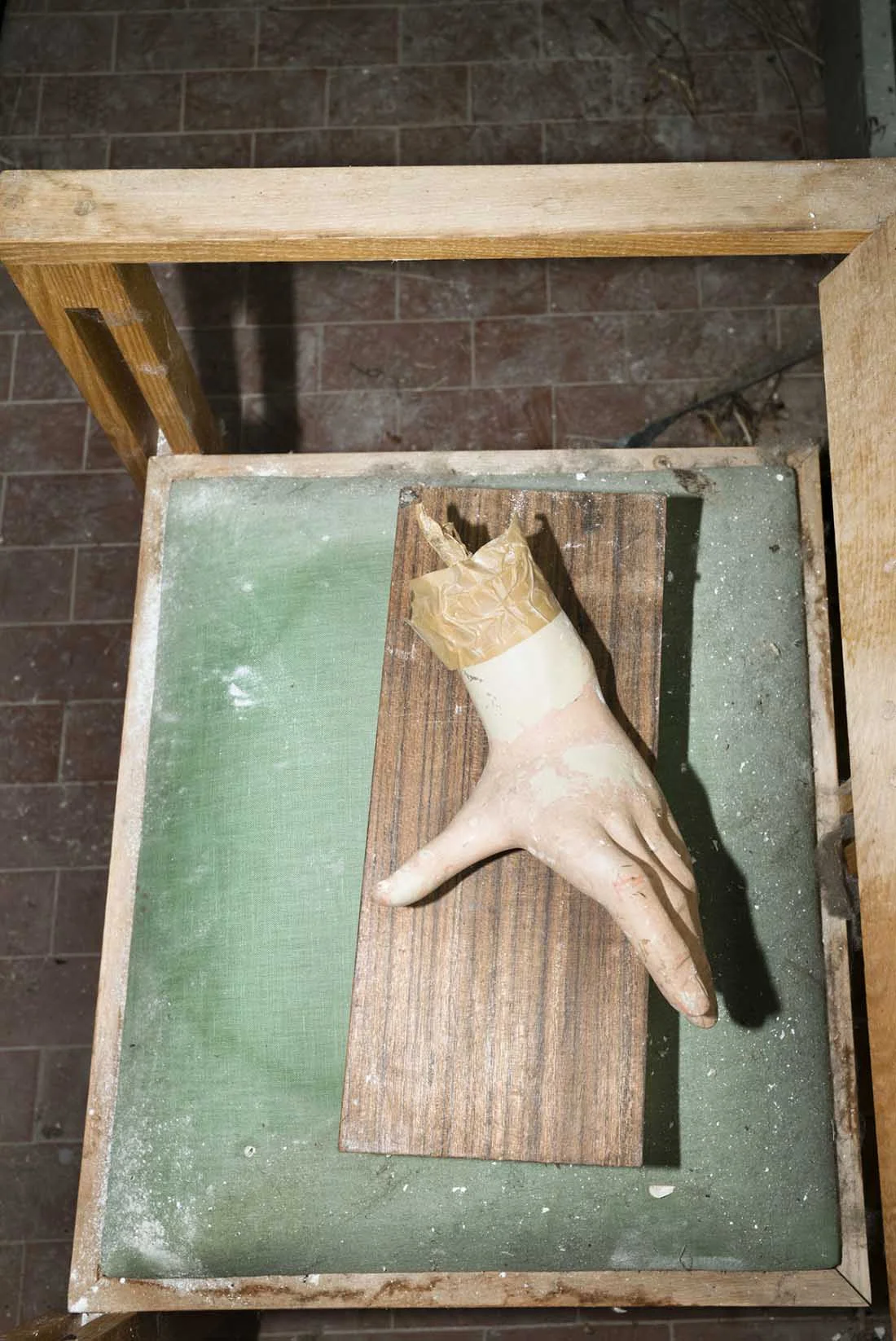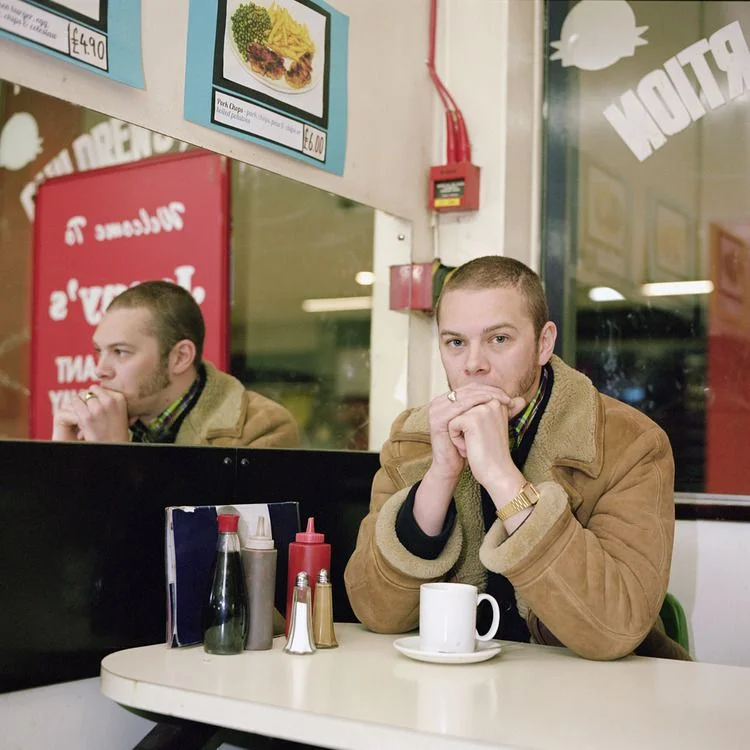Massimo Mastrorillo
I was wondering if you could tell me a bit about how you first got into photography? What was the catalyst that made you start taking photos?
I began approaching photography thanks to my friends who at the time were trying to make a profession of it. I was studying at university and seeing them at work prompted me to buy my first camera. I remember when I developed my first film, I could’t sleep at night because of the anxiety. Then I finally decided to enroll to a photography school.
Colour and energetic composition seem to be a huge part of your work, have you always been attracted to certain colour combinations? I was also wondering whether you search for certain colour palettes within your photography?
I actually photographed in black and white for a long time . I’m not really looking for colour combinations or recognizable aesthetics, on the contrary, I try to avoid it in my work. However, there is always an ”unconscious aesthetic", connected with the places. Even though I used a poor language while creating Aliqual, it adopted surrealistic influences, almost pictorial. I noticed it during the development of the project, while it was taking a shape.
Your photography seems to be mainly documentary, I wanted to ask if you ever consider constructing scenes or whether you have always focused on documentary?
There is no set up in my work, I'm not a conformist to documentary photography. Fiction is for me part of the story telling language and the line between reality and fiction or imagination is an interesting edge border, it should be investigated to cause interest and to get the images to the public. I am sure there’s enough space for the influences, to fit different shapes in different contents. Exactly like the literature, photographs can be used as words. I think this extreme authorship according to the story, is the only way to rise up from mediocrity emerging from the iconographic overproduction of our own times.
I am also wondering what inspired you to create these series from the Aliqual project? Is the place personal to you?
When a word is endlessly repeated, this word takes another meaning. Aliqual is the distortion of the name L'Aquila, but is also the name of a parallel city to the one that everyone knew, where chaos is so strong it becomes order, where unexpected geometric shapes are marked out. This reality that nobody wants to see, is the soul of a hurt city, and people forced to live in a state of suspension. This is where the memories that you don't want to remember are, the mold that shakes the origins of being, changing the colors and shapes; However this is where it seems to be a new form of life. Aliqual is not just a photographic story, it's a metaphor, in which L'Aquila and its state of abandonment produce deep reflections, not necessarily related to what is being described. Maybe Aliqual isn't even photography anymore, but something that transcends the classical idea that we have of this medium. My relationship with the city has been built time by time, listening to people, becoming closer to a reality I was trying to understand and had a hard time to explain. In the end, my story has found a centering point, able to transcend the specificity of the place.
The series of Aliqual has some really striking and disruptive compositions, was this something you searched out to convey the nature of the aftermath of a natural disaster? Was the impact of a natural disaster something that you intended to convey in this piece?
I would say that the whole series ends up being an attempt to measure the chaos that belongs to the places affected by natural disasters and human negligence.
The same series also seems to show fragments of personalities/lives. I was wondering if, when assembled in the exhibition, you feel as though this told one narrative or many separate personal stories?
It's only a narrative, made up by different pieces. None of the objects nor the details photographed are a single story. In this "organized chaos" everything seems to stand in an apparently unstable balance. there's actually stability but it's totally unexpected. Elements can change but not the result. Everything has a lot of connections with the reality of the universe where everything is born and dies, everything changes but remains like before. It's different from the idea of life and death. There is not an end but only a different balance.
I noticed in some of your series, that the photographs are arranged in diptychs, I was wondering if there is a reason why you like to do this? Or whether it is to show contrasting elements in your work? Or to elaborate the narrative?
I love to amaze. Sometimes the diptych is able to connect opposite elements or find a common essence where it seems there's a notice. I like to offer different points of view from the same reality. Different angles, the metaphor are elements that help to develop the imagination.
A lot of your photos seem to transmit movement and energy, as if something in the picture was about to take another direction while being photographed. Is this something you are conscious of or even attracted to?
I have recently been trying to put less and less elements and use less space in the frame to tell more. What interests me is the relationship between the man and the environment and the life that inevitably generates and feeds this relationship.
Would you be able to tell Coeval a little bit about the project you are working on now or any upcoming projects?
I've been working with the project "The Sea is Us" for about two years now, inspired by the goods taken from the mafia in Italy. I follow the money of the Mafia, their goods. Seized or confiscated. Reused or abandoned. Using very close-up shots to turn them into metaphors, to claim the beauty in the destruction of the stories they tell and because I want to move from the particular: analyze it, break it down, approach it in a thousand other details. To then leave it and explore the outline, understand the nature of the whole. The images which are used technically are ranging from photojournalism, the forensic photography, the appropriation of the historical image, to become landscape photography, portraits and still-life. Together with my partner Pamela Piscicelli, I am building reality and fiction, a kind of visual crime dossier through a mix of continuous past, present and the use of writing, where each piece helps as a clue to the resolution. Like a part of the puzzle.
Finally, I was wondering whether the names of your series are important to you? Do they help you to tell part of the narrative?
The title of a story is important and is part of the creative process of a writer, as much as the construction of images, editing, writing or implementation of a book and/or exhibition.
What to read next







